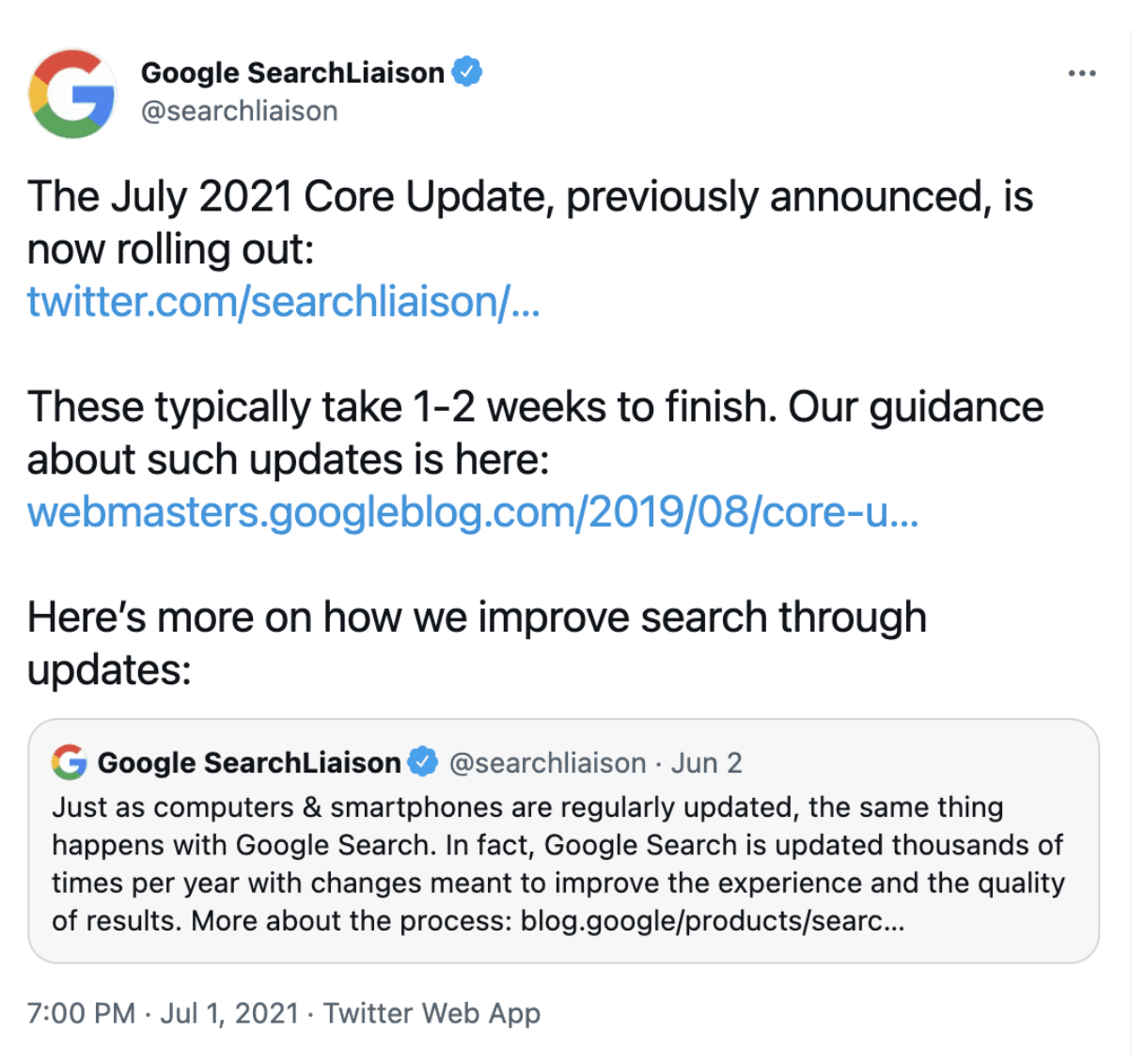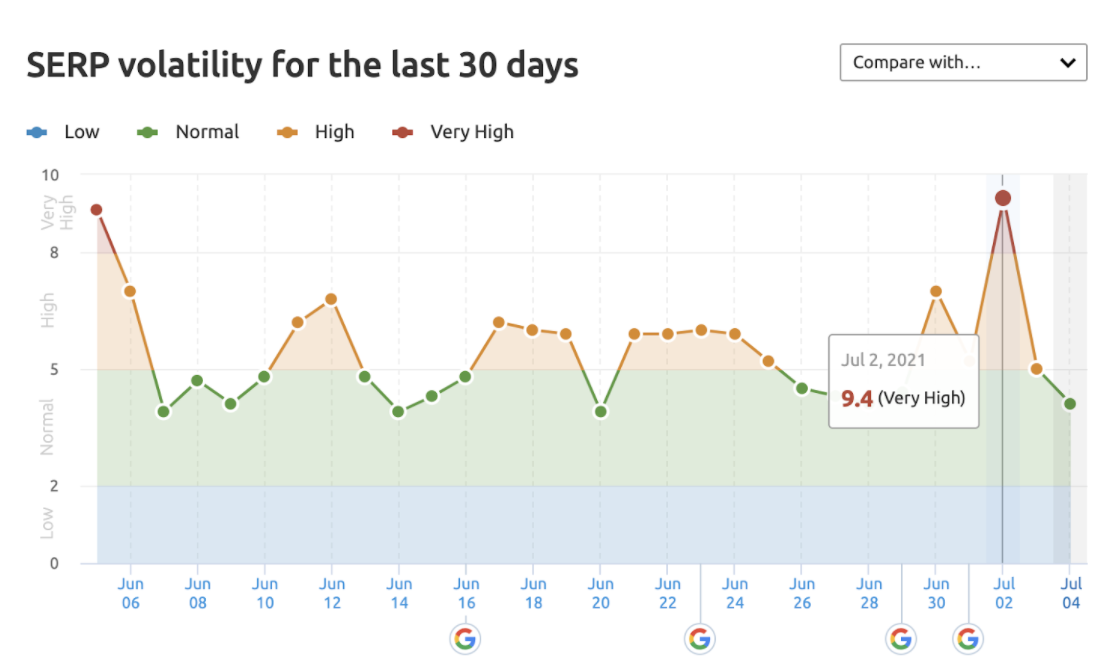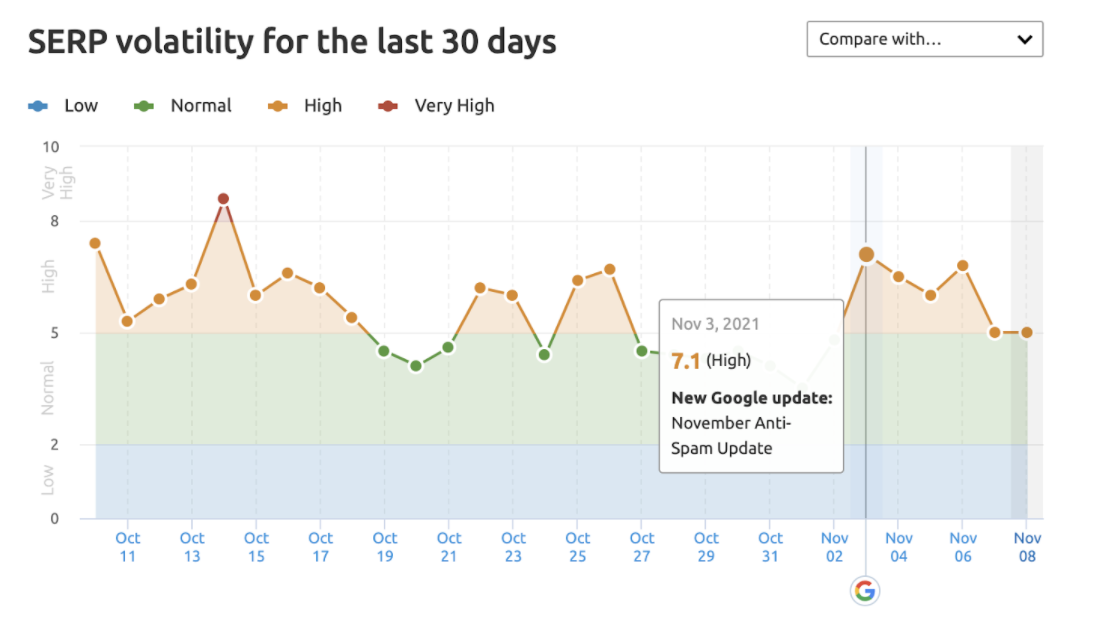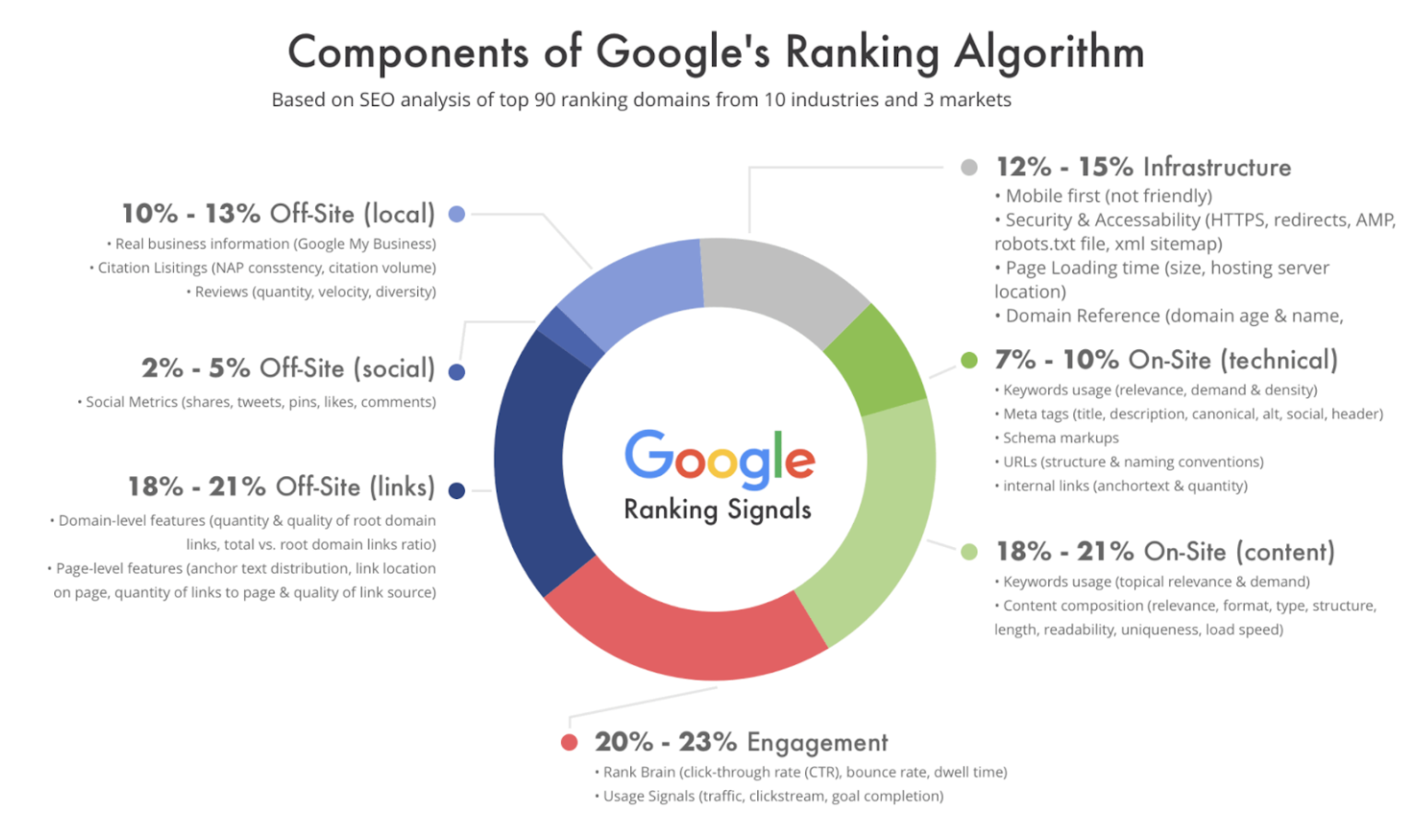Now that Core Web Vitals have already rolled out, let’s find out how these page experience metrics are affected by ads. Core Web Vitals (CWV) are essential to evaluate your user engagement, experience, and page loading speed that impacts ad revenue.

The latest data showed that at the beginning of June and July 2021, the volatility on SERP was very high, meaning that many websites have been affected by the core update and saw changes in their traffic.
Before you start panicking, check your analytics and see if there are some traffic drops or increases for your pages. This will help you understand which pages should be improved and for which pages you could optimize ads to improve CWV scores.
 According to this month’s data, the highest volatility was on the 3rd of November 2021 due to the latest update by Google–Anti Spam Update.
According to this month’s data, the highest volatility was on the 3rd of November 2021 due to the latest update by Google–Anti Spam Update.

Impact on CLS
CLS, also known as Cumulative Layout Shift, keeps an eye on a website’s visual stability and is directly affected by elements like ads, images, and animation. Simply speaking, when it comes to CLS, every element on your website that shifts affects your CLS score.
If the elements, like ads, load fast and do not cause weird content shifting, your score should be fine.
How to avoid layout shifting if you display ads?
Optimize your ads by:
- Replacing large ads that expand outside of an ad container with, for example, native or sticky ads.

- Implementing ad refresh
Be aware that even though the ad is refreshed and displayed in the same ad position as the previous one, the CLS can be negatively affected and cause the layout shift.
In this case, you have to make sure that your monetization partner can avoid this issue and effectively monitor the ads for the refreshes and only serve the new ad when it’s fully ready to be displayed.
- Implementing lazy loading
The lazy loading feature helps to delay loading many page elements, including ads, iframes, and images. It allows serving the ad only when the user is most likely to see it.
Povilas Goberis, an expert in programmatic advertising and COO of monetization platform Setupad, states: ”Any ads on a website, especially the programmatic ads, tend to use heavy JavaScript codes and run different sizes in single ad placement. That may negatively influence the website’s loading speed and content stability. In our company, we try to follow the best practices to deliver our programmatic ads as efficiently as possible, avoid ad clutter and reduce layout shift by using more fixed ad placement in above the fold (ATF) positions.”

Impact on FID
FID or First Input Delay metric measures how fast the content visually renders on a website and how quickly it interacts with the user when he first visits the site.
If you display responsive or video ads, they must interact with users. To not harm your FID score, make sure the third-party codes render fast and don’t block your webpage’s loading.
The main issue causing a low FID score is heavy JavaScript execution. If you manage to optimize your site for fast readiness, it will improve your FID score.
According to Google, one way to do it is by third-party script execution–ads.
By reducing third-party scripts, you can reduce page latency. High page latency harms the website’s loading time and user experience that’s crucial for Core Web Vitals.
Google suggests publishers:
- explore on-demand loading of third-party code–don’t load those below-the-fold ads until they’re scrolled closer to the viewport.
- load third-party scripts asynchronously because synchronous loading blocks fast loading, not only for ads but also content.
Impact on LCP
Largest Contentful Paint (LCP) measures how long it takes for the largest element (content, image, ads) to load and appear on the screen.
If you display ads, LCP is impacted only if they are served above the fold (ATF). If the ad is above the fold and larger in size than other elements like the main image, the score might be negatively impacted. In this case, it’s suggested to display ads below the fold and ensure a fast loading time for them.
Conclusion
We all know that optimizing ads can take some time and making them UX-friendly is even more time consuming.
Currently, the majority of sites still don’t pass the CWV assessment. Remember, you don’t have to panic! Only 12%-15% of SEO rankings are affected by Google’s Ranking Algorithm update. If your created content is high-quality and you already rank in the first position, there are low chances that Google will drop your rankings just because you don’t pass.

P.Goberis, the expert of Setupad, continues: ”Regardless of any efforts, the ads will still impact the CWV metrics, so it’s worth remembering that Google search engine measures a lot more signals to determine the right position of any given page in search results. As CWV is just a small part of the whole list of signals that Google uses, a slight drop in vital metrics might have minimum or no impact at all to search position results in most cases.”
Short BIO
 Agnese Repule is a passionate Content Marketing Manager at website monetization platform Setupad. She covers topics about programmatic advertising, website monetization, SEO, and content marketing. Another passion of hers is art.
Agnese Repule is a passionate Content Marketing Manager at website monetization platform Setupad. She covers topics about programmatic advertising, website monetization, SEO, and content marketing. Another passion of hers is art.
Twitter: https://twitter.com/Setupad_Team
LinkedIn: https://www.linkedin.com/company/setupad/

